QuestionHi, our 5 year old golden doodle dog has been a great family pet since we had her as a pup. Unfortunately, she was mis-treated by her previous owner and has always been a particularly nervous dog, especially around strangers. Normally, she will bark at someone she doesn't know entering our home and initially for friends we gave them treats to sit and feed her which worked well. This was purely barking and didn't seem aggressive to us or our friends, more of a nuisance than anything but as I say, the giving of treats worked like a charm to pacify the dog and all went well using this method.
However, just recently, our 18 year old son met a girl who has a 18 month old daughter and the first introduction to the family frightened us to the point we had to remove the dog from the room. As the youngster toddled around the living room, our dog (Molly) snarled as the youngster approached her and I immediately put myself between the child and the dog with a firm "ahhhh" to the dog, reassuringly her as she stopped. This continued and we became so anxious about the situation we felt it wise to remove the dog after she showed her teeth and made a quick nip to the child which luckily missed.
We love Molly dearly but simply cannot allow this situation to arise again. Luckily, our son's girlfriend (the child's mother) was understanding as we explained she had been ill treated by her previous owner and we would like to reinforce positive behaviour to the dog in similar circumstances but really need to hear the views of someone who knows how best to go about this so we avoid a potentially catastrophic situation.
Molly isn't an aggressive dog when she is walking in the park, it just seems as soon as someone she doesn't know enters our house, all hell breaks loose with her barking, and although she hasn't ever snarled or attempted to nip anyone (she barks and backs away) we really did get a big fright when she snarled at the child - it was almost as if she realised the child was small enough for her to have a go?!.
Would appreciate any advice given and any steps to perform some positive reinforcement for our dog as she is normally a playful and very loving dog and we would love for her to both welcome adults and children into our home without all the barking and particularly without showing aggression to children.
Kind Regards
Mark
Answer Hello, I'm sorry to hear about your situation with Molly. Based what you have told me, I don't believe that there is malicious intent behind Molly's behavior. First, we can evaluate Molly's background. Since you mentioned that Molly had a previous owner that mistreated her, I'm assuming that she probably did not receive the socialization skills that she should have. Second, we can look at how the dog is viewing the situation and use that information to create a plan to intervene in the behavior.
Young puppies have a couple of developmental stages that are of particular importance to their future behavior. First, between 6-8 weeks old they are in a fear period. During this period, anything that scares or startles them has the possibility of imprinting negatively in their memory. During this period, it is important to let the mother and other puppies bond and avoid drastic changes to their routines. The second stage is a socialization stage, which happens between 10-16 weeks. This is the best time for the puppy to get out and have positive experiences with everything it can. It is at this age that a puppy should be introduced to men, women, differing skin colors, babies, elderly, hats, bikes, skateboards, wheelchairs, etc. Giving the opportunities for good experiences during this stage will help to greatly increase the chances for creating a well rounded dog.
Of course, what's done is done and you cannot make Molly a 10 week old puppy again. However, it is important to understand that she may be lacking socialization with babies which may cause her to fear babies. This is a big difference from her realizing "the child was small enough for her to have a go". The most important step to take next is to improve her socialization skills. Reading what you have described, the dog certainly seems to fear people in general, but especially small children. The fact that she is running away and barking is a good sign. Granted, it is a behavior you want to fix, however, running away/barking/growling/snapping are all warning signs that the dog is uncomfortable and a real bite may come soon. To get Molly back on the right track, you are going to have to make every encounter with strangers positive, ESPECIALLY when small children are around.
Start by conditioning her to identify a word that accompanies food. Do not ask her to display any behaviors (sit, down, etc.). Simply have some small treats handy, and say "yes" or "good" (choose 1 word and stick with it) and give her a treat immediately after. This is important because it will help you avoid chasing a scared dog around trying to get her to take treats. After a few practices, Molly should look at you immediately after you say "yes" or "good". Now you have her attention, and can treat her while her attention is on you.
Then, you will start saying "yes/good" and treating every time a person walks in the house and she DOES NOT have a negative reaction. If she does have a negative reaction, ignore her. When a baby/toddler is around, do the same thing but use a super special treat that she is not used to getting all the time (like pieces of chicken or cheese) as the reward, and ONLY use this when a small child is present. To be clear, if she even just looks in the stranger's direction without getting upset, say "yes/good" and give her a treat. As she progresses and becomes more relaxed in the future, you can ask for her to try harder to get the treat. For example, looking calmly at the stranger from across the room won't count for a treat anymore, but being calm while only being halfway across the room will earn a treat. Each time she starts to master the concept, make it more challenging for her to get a treat. Don't be stingy though...treat often for a job well done.
When the baby is nearby, do not let the baby interact with the dog on her own. In fact, until the dog is comfortable with seeing the baby across the room, I would advise that you do not let the baby have physical interactions with the dog yet. Remember, we are trying to change her mind about how she feels about babies around the house. Eventually, fade out the treats altogether.
If at any time you feel like these steps aren't working, consider hiring a trainer in your area that will be willing to take a closer look at Molly and work with her. And remember...Molly is displaying these behaviors because she is fearful. She does not sound like a vicious child attacker. Therefore, because the behavior is fear based, if we can eliminate the fear and boost her confidence she should transform into a more well-rounded dog fairly quickly. Good luck! -Teri

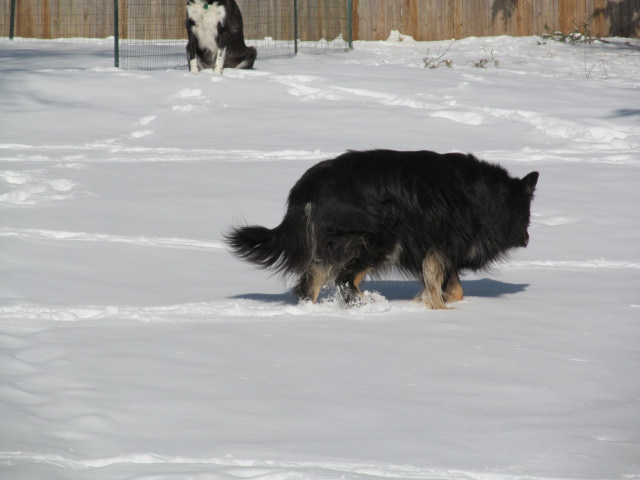 Old dog, old owner, grooming issues
Question
Jessis
I have a 13-yr-old German shephe
Old dog, old owner, grooming issues
Question
Jessis
I have a 13-yr-old German shephe
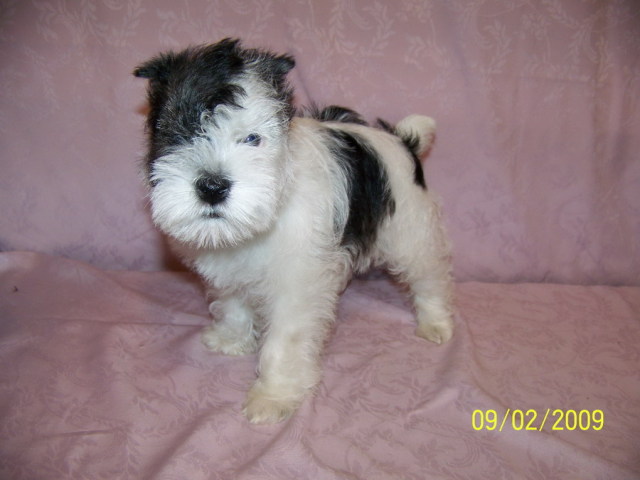 Eye problems w/ schnauzers
Question
Mini parti schnauzer
We currently have a 14 yr
Eye problems w/ schnauzers
Question
Mini parti schnauzer
We currently have a 14 yr
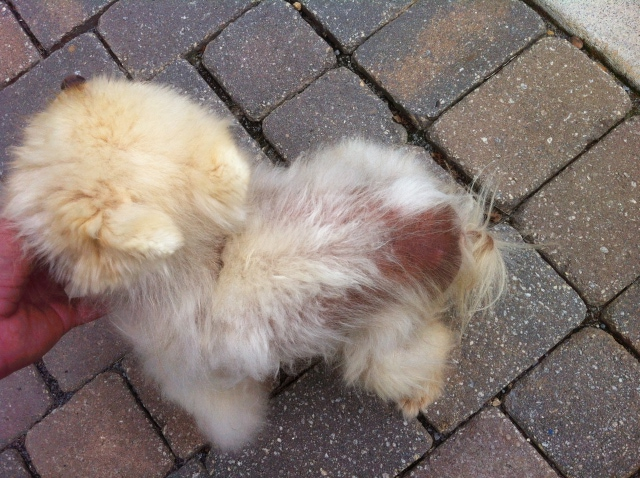 Hair growth stimulation
Question
Hairless Pom
A few years back I cut my
Hair growth stimulation
Question
Hairless Pom
A few years back I cut my
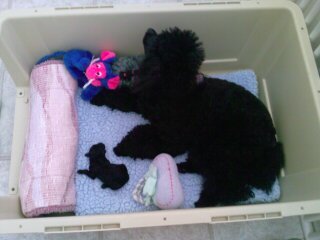 Diarrhea in Nursing Bitches
QuestionAtrix & Pup
QUESTION: My Champion Mi
Diarrhea in Nursing Bitches
QuestionAtrix & Pup
QUESTION: My Champion Mi
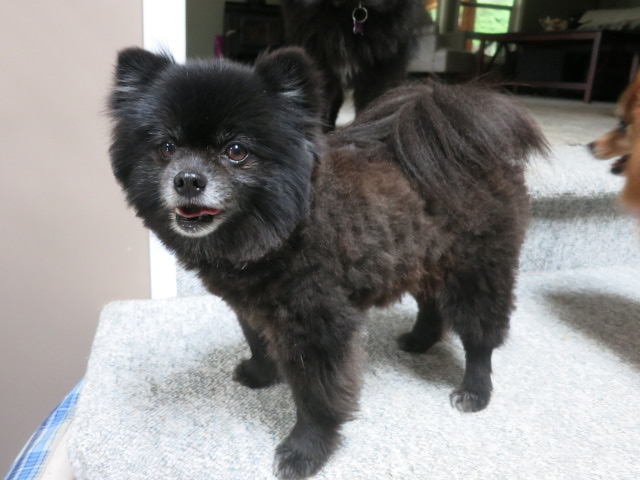 Will my Pomeranian loose his hair
Question
My Pomeranian`s hair c
I have a 5 year
Will my Pomeranian loose his hair
Question
My Pomeranian`s hair c
I have a 5 year